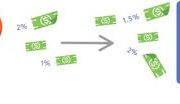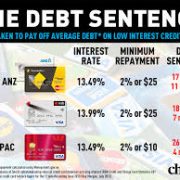Credit Card Reward Cards
No matter where you look, there is always a credit card company that is offering reward programs with their credit cards. New ones pop up all the time, making it sound too good to turn down. Even though they may sound great, you may wonder if the rewards are truly worth it. In some cases they are, although in others they may not be quite as good as you would like.
Although having more than one reward card is something many people instantly think about, you should always keep in mind that not all of them are worth having. Even though using your credit card is always good, you can sometimes end up paying quite a bit if you don’t pay attention to what you are buying. When it comes down to credit card reward cards, you should use caution – with a dash of common sense.
Any reward cards that come with high interest rates should always be avoided. With most reward cards, you’ll find that they include higher rates of interest than standard cards. This higher interest rate can quickly and easily offset any type of reward. To be on the safe side, you should always look at the interest rates and determine if the reward is indeed worth it. If you pay off your entire balance at the end of every month – then this won’t be a concern at all for you.
You should also keep your eyes peeled for reward cards that offer a high annual fee. These cards can be very tough to keep a grasp of, and they can also interfere with any type of reward you may think your getting. If you look at the fine print before you get choose your reward credit card, you can help to eliminate problems.
Cash back is a type of reward card that is becoming very popular. A lot of the top credit card companies and banks offer cash back programs that are normally around 1% for every purchase that you make. Before you rush out and get a reward card, you should always make sure that you read the fine print and see if there is a maximum limit on the card.
Another type of popular reward credit card is the type that give you points for every purchase you make using that card. Once you have accumulated enough points, you can redeem them for items and other cool things. Some cards will have limits as to how many points you can receive, which again makes it your best interest to shop around.
There are also credit cards with frequent flyer miles, which have been around the longest. Some cards will base their rewards on points, while some choose to use actual miles. For every dollar you spend using your frequent flyer credit card, you’ll receive either a point or a mile. Once you get enough accumulated, you can redeem them. Most frequent flyer rewards take about 25,000 points or miles in order to redeem them, which can make it nearly impossible for some to reap the benefits of using the card.
No matter where you look, finding the right credit card reward card can take some time and effort. You may have no problems finding the card to fit your needs, and if you do, you should consider yourself lucky. Before you choose your card however – you should always take the necessary time to read the fine print and compare what each unique company has to offer you.
TRUSTED MORTGAGE BROKERS IN PERTH
RELIABLE CLEANING COMPANY PERTH
<!– Global site tag (gtag.js) – Google Analytics –>
<script async src=”https://www.googletagmanager.com/gtag/js?id=UA-132843264-2″></script>
<script>
window.dataLayer = window.dataLayer || [];
function gtag(){dataLayer.push(arguments);}
gtag(‘js’, new Date());
gtag(‘config’, ‘UA-132843264-2’);
</script>










